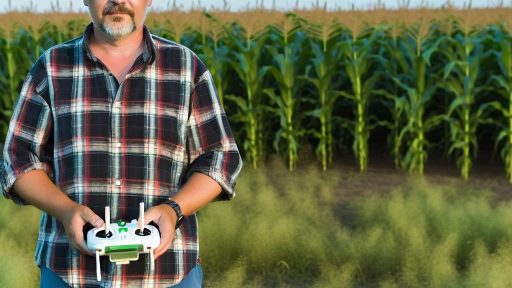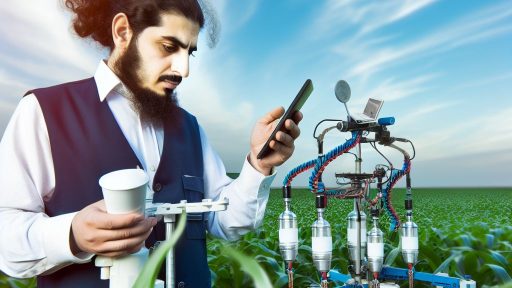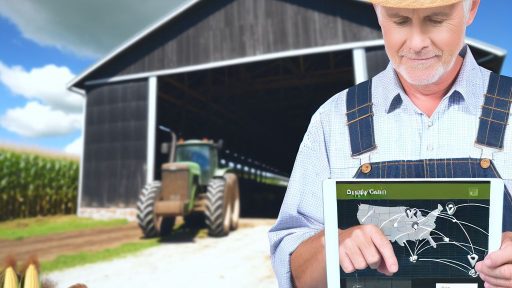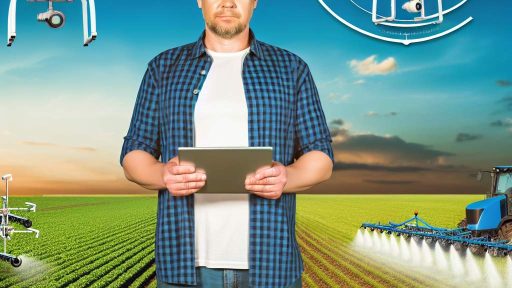Understanding the Benefits of Agricultural Drones
Enhanced Crop Monitoring
Agricultural drones provide real-time crop monitoring capabilities.
This technology allows farmers to assess plant health efficiently.
Through aerial imaging, drones quickly identify problem areas.
As a result, farmers can address issues before they escalate.
Ultimately, this leads to healthier crops and higher yields.
Precision Agriculture
Drones contribute significantly to precision agriculture practices.
They help farmers apply fertilizers and pesticides more accurately.
Therefore, resources are used more efficiently across the farm.
This targeted approach reduces waste and environmental impact.
Ultimately, it increases overall farm profitability.
Time and Cost Efficiency
Using drones saves farmers considerable time in field assessments.
This technology allows for large areas to be surveyed quickly.
Consequently, labor costs decrease as manual inspection is minimized.
Moreover, fewer resources spent on inefficient scouting translates to savings.
In the long run, drone usage fosters cost-effective farming operations.
Transform Your Agribusiness
Unlock your farm's potential with expert advice tailored to your needs. Get actionable steps that drive real results.
Get StartedData Collection and Analysis
Drones collect vast amounts of data in a short period.
Farmers can utilize this data for detailed analyses.
Information gathered can include soil health and crop growth rates.
Thus, data-driven decisions improve farm management strategies.
Furthermore, this promotes sustainable farming practices.
Improved Planning and Decision Making
With high-resolution images, planning becomes more straightforward.
Drones help farmers visualize their fields from above.
Therefore, they can make better strategic decisions about planting.
This clarity leads to enhanced operational efficiency within the farm.
Consequently, farmers can respond swiftly to changing conditions.
Key Features to Look for in a Farming Drone
Flight Time and Range
The flight time of a farming drone is crucial for efficient operation.
Longer flight times allow for more comprehensive surveying of large fields.
Additionally, consider the operational range of the drone.
A greater range lets you cover more ground without needing to return frequently.
Camera Quality
High-resolution cameras are essential for effective monitoring.
Look for drones that offer both RGB and multispectral imaging capabilities.
This enables you to gather valuable data for crop health assessments.
Furthermore, advanced camera stabilization ensures clear imagery in windy conditions.
Data Management Software
Data management software plays a vital role in analyzing aerial imagery.
Choose drones that offer user-friendly software for data processing.
Effective software helps in generating actionable insights from collected data.
Moreover, ensure that it integrates smoothly with other farming management systems.
Durability and Weather Resistance
Farming drones should withstand harsh farming conditions.
Look for models built with sturdy materials to resist wear and tear.
Showcase Your Farming Business
Publish your professional farming services profile on our blog for a one-time fee of $200 and reach a dedicated audience of farmers and agribusiness owners.
Publish Your ProfileWeather resistance is also important for safe operation during light rain.
Additionally, consider drones that can operate in varying temperatures.
Ease of Use
User-friendly controls simplify operation for all experience levels.
Consider drones with autonomous flight capabilities for added convenience.
Intuitive interfaces make it easier for new users to learn quickly.
Training resources from manufacturers can further enhance user familiarity.
Affordability and Return on Investment
Assess the total cost of ownership when selecting a drone.
Factor in initial purchase price, maintenance, and software costs.
A well-chosen drone can significantly improve farm efficiency.
Ultimately, consider how quickly you can expect a return on your investment.
Types of Drones Suitable for Different Agricultural Practices
Overview of Agricultural Drones
Agricultural drones enhance precision farming significantly.
They provide valuable insights and data collection abilities.
Farmers can choose different drone types based on their needs.
Fixed-Wing Drones
Fixed-wing drones excel in covering large areas efficiently.
They fly longer distances and can provide detailed maps.
This type is ideal for crop monitoring over vast fields.
Applications
Farmers utilize fixed-wing drones for precision agriculture.
- Field mapping and analysis
- Soil analysis and assessments
- Crop health monitoring
Multi-Rotor Drones
Multi-rotor drones offer flexibility and maneuverability.
They are suitable for smaller farm operations.
This type is perfect for tasks like spraying and irrigation.
Applications
Farmers use multi-rotor drones in various ways.
- Pesticide and fertilizer application
- Real-time crop health assessment
- Livestock monitoring and management
Hybrid Drones
Hybrid drones combine features of both fixed-wing and multi-rotor types.
They offer the best of both worlds with enhanced capabilities.
This type can take off and land vertically while flying efficiently.
Applications
Farmers leverage hybrid drones for many tasks.
- Integrated crop monitoring
- Accurate pesticide spraying
- Detailed aerial photography for analysis
Choosing the Right Drone for Your Needs
Identifying your specific agricultural needs is crucial.
Consider factors such as field size and type of crops.
Evaluate your budget to select the right equipment.
Familiarize yourself with drone regulations in your area.
Assessing Your Farm’s Requirements
Each farm will have unique requirements.
Take stock of the tasks you want to automate.
Invest in a drone that fits your operational needs effectively.
Future Considerations
Stay updated on drone technology advancements.
Consider how emerging technologies might benefit farming.
Ultimately, the right drone will boost efficiency and productivity.
Learn More: Training Your Team To Use Farm Management Software Effectively
Evaluating Payload Capacity for Crop Treatments
Understanding Payload Capacity
Payload capacity refers to how much weight a drone can carry.
This measurement is crucial for efficient crop treatments.
Farmers need to select drones that meet their specific agricultural needs.
Factors Affecting Payload Capacity
Several factors influence the payload capacity of agricultural drones.
Showcase Your Farming Business
Publish your professional farming services profile on our blog for a one-time fee of $200 and reach a dedicated audience of farmers and agribusiness owners.
Publish Your ProfileFirst, the drone’s design impacts its load-carrying ability.
Next, the materials used in construction play a significant role.
Additionally, battery size can limit the maximum payload.
Types of Payloads
Drones can carry various payloads, including liquids and solids.
- Pesticides and herbicides for crop protection
- Fertilizers for enhancing soil fertility
- Seed pellets for planting crops
Choosing the Right Drone for Your Payload Needs
Selecting the right drone involves assessing your payload requirements.
Evaluate the types of crops you grow and their specific needs.
Check the specifications of potential drones carefully.
Finally, consider future growth and whether the drone can adapt.
Popular Agricultural Drone Models
Some drones are specifically designed for agriculture.
- DJI Agras T30 offers a solid payload capacity
- Parrot Bluegrass has tools for accurate crop data collection
- Yuneec H520 provides great flexibility in farming applications
Understanding Regulations and Limitations
Regulatory requirements can impact drone usage for agriculture.
Be aware of local laws regarding drone payload limits.
Moreover, ensure compliance with safety standards.
Finally, always check for updates on regulations as they evolve.
Delve into the Subject: Leveraging Drone Data For Smarter Farming Decisions
Determining the Ideal Flight Time for Your Needs
Choosing the right agricultural drone requires careful consideration of flight time.
This factor greatly influences its effectiveness on your farm.
First, assess the size of your farm and its specific needs.
For larger farms, longer flight times are essential.
Conversely, smaller fields may require less time in the air.
Evaluating Battery Life
Battery life directly impacts your drone’s operational duration.
Most agricultural drones operate between 20 and 60 minutes on a single charge.
Thus, understanding your drone’s battery specifications is crucial.
Moreover, look for models with quick recharge capabilities.
Such models allow for extended periods of operation throughout your workday.
Understanding Your Tasks
Your agricultural tasks determine necessary flight times.
For instance, crop scanning and monitoring require different durations.
Regular crop inspections might need up to 30 minutes per flight.
On the other hand, spraying operations could demand longer flights.
Plan your drone usage around these specific tasks.
Considering Environmental Factors
Environmental conditions also influence drone flight time.
Wind speed, temperature, and humidity affect battery performance.
Strong winds may lead to shorter operational periods for your drone.
Consequently, adapt your flying schedule according to weather conditions.
Maximizing Flight Efficiency
To maximize flight efficiency, utilize flight planning software.
This technology helps you chart optimal routes for various tasks.
By doing so, you conserve battery life and complete tasks more efficiently.
Additionally, monitor your drone’s performance regularly.
Frequent maintenance can help maintain peak battery efficiency.
Learn More: Biodegradable Packaging Solutions Supporting Sustainable Agriculture
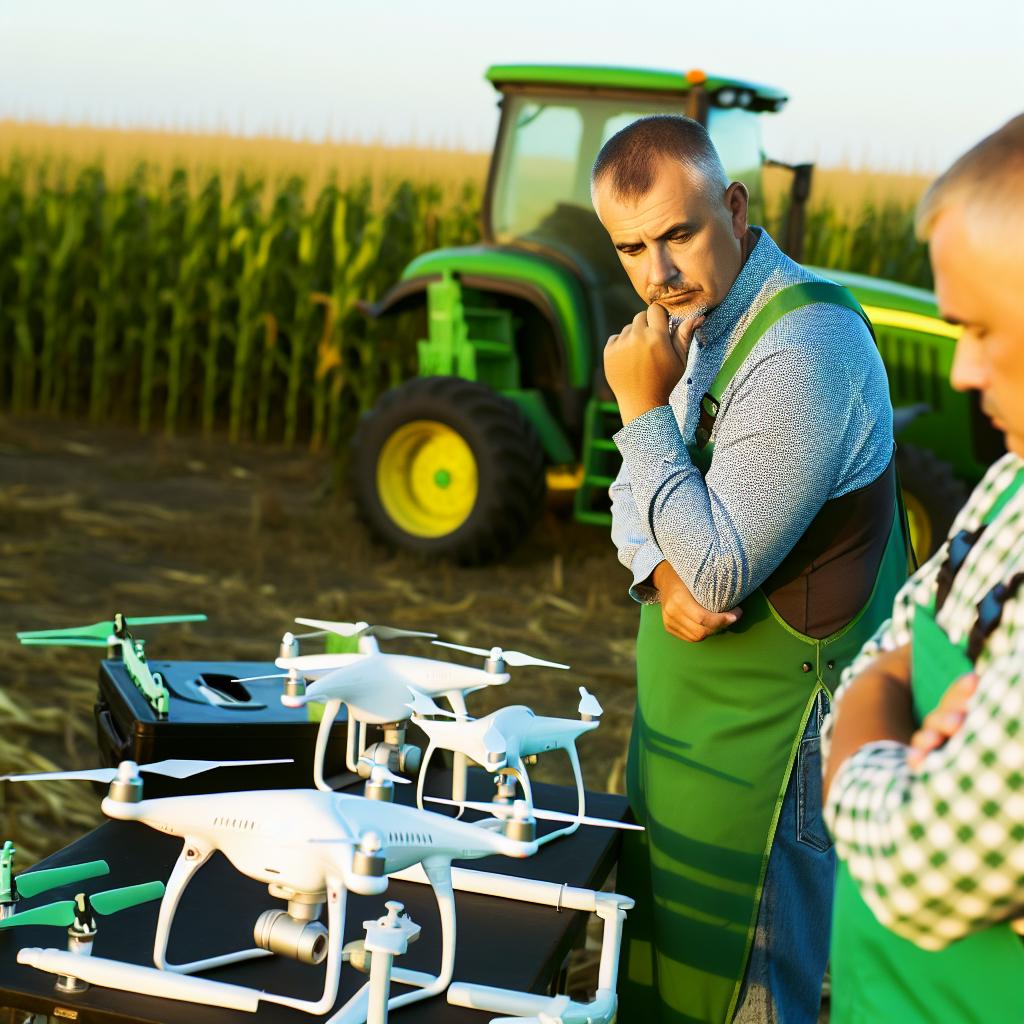
Understanding Regulatory Requirements for Drone Use in Agriculture
Overview of Drone Regulations
The regulatory landscape for agricultural drones is rapidly evolving.
Showcase Your Farming Business
Publish your professional farming services profile on our blog for a one-time fee of $200 and reach a dedicated audience of farmers and agribusiness owners.
Publish Your ProfileUnderstanding these regulations is essential for farmers.
The Federal Aviation Administration (FAA) governs drone usage in the United States.
In Canada, Transport Canada oversees these regulations.
Each region may also have local laws affecting drone operations.
Registering Your Drone
All drones over a specific weight must be registered with the FAA.
Farmers need to provide their drone’s model and serial number.
This registration helps with accountability and tracking.
In some instances, failure to register can lead to fines.
Obtaining Required Certifications
A Remote Pilot Certificate is necessary for commercial drone use.
Farmers must pass a written exam to obtain this certification.
This ensures they understand airspace regulations and safety protocols.
Periodic renewal of the certification may also be required.
Complying with Airspace Restrictions
Drones must adhere to specific airspace classifications.
Controlled airspace often restricts drone operations.
Farmers should be aware of surrounding airports and no-fly zones.
Utilizing airspace maps can help avoid violation of regulations.
Data Privacy and Security Considerations
Data collected by drones may be subject to privacy laws.
Farmers should ensure they respect the privacy of neighbors and public spaces.
Implementing security measures helps protect sensitive information.
Additionally, understanding local laws regarding aerial imaging is vital.
Insurance and Liability Issues
Liability insurance for drone operations is advisable.
This coverage protects farmers against potential claims and damages.
Consulting with an insurance professional can provide guidance.
They can help identify suitable coverage options for agricultural drones.
You Might Also Like: Renewable Energy Technologies for Livestock Farming
Comparing Price Points: Budget-Friendly Vs. High-End Drones
Budget-Friendly Drones
Budget-friendly drones serve as an excellent entry point for many farmers.
These models provide essential features without breaking the bank.
Typically, they cost between $300 and $1,500.
This price range allows for cost-effective analysis of farm conditions.
Many budget drones offer basic mapping capabilities.
Farmers can benefit from aerial imaging without significant investment.
Brands like DJI and Parrot lead the budget-friendly category.
However, be mindful of build quality and range limitations.
These drones may lack some advanced features but still deliver useful data.
High-End Drones
High-end drones are ideal for larger operations or specialized tasks.
These drones often range from $1,500 to over $10,000.
They feature advanced sensors and longer flight times.
This allows farmers to gather more comprehensive data.
Many high-end models integrate with precision agriculture software.
They provide enhanced analytics and mapping capabilities.
Showcase Your Farming Business
Publish your professional farming services profile on our blog for a one-time fee of $200 and reach a dedicated audience of farmers and agribusiness owners.
Publish Your ProfileBrands like senseFly and PrecisionHawk are popular in this category.
Furthermore, these drones excel in efficiency and reliability.
The investment often pays off through improved crop yields.
Evaluating Cost vs. Benefits
When choosing a drone, consider your specific operational needs.
Budget models may suffice for smaller farms with simpler needs.
However, larger farms often require advanced technology.
This technology directly impacts crop management and yield potential.
Ultimately, assess the return on investment before making a decision.
In addition, factor in the cost of accessories and software subscriptions.
Understanding your long-term goals helps in the selection process.
For instance, a high-end drone can ultimately save time and resources.
In contrast, a budget-friendly option may limit future growth opportunities.
Integrating Drones with Existing Farm Management Systems
Understanding the Importance of Integration
Integrating drones into farm management systems enhances overall efficiency.
Farmers can improve decision-making through real-time data collection.
This integration fosters better resource management and planning.
Moreover, it allows for precise monitoring of crop health and growth patterns.
Choosing Compatible Software
Selecting software that supports drone data is crucial for effective integration.
Look for options that provide seamless synchronization with existing systems.
Consider software that offers advanced analytics for improved insights.
Popular choices include Ag Leader and Trimble’s precision farming solutions.
Establishing Data Flow
Creating a smooth data flow between drones and farm management software is essential.
Ensure that drone sensors can relay information clearly and promptly.
Data should be exportable in formats compatible with existing systems.
Additionally, consider using cloud solutions for better data accessibility.
Training Staff on New Technologies
Training personnel is vital for maximizing the benefits of drone integration.
Conduct workshops to familiarize staff with drone operations and data interpretation.
Encourage ongoing learning to keep up with technological advancements.
Partnering with drone service providers can enhance training efforts.
Regular Maintenance and Updates
Maintaining drones and software ensures optimal performance over time.
Schedule regular checks to identify any potential issues early.
Stay updated with the latest software improvements and features.
This commitment extends the lifespan of your technology investments.
Additional Resources
25 Best Colleges for Precision Agriculture – Global Ag Tech Initiative

